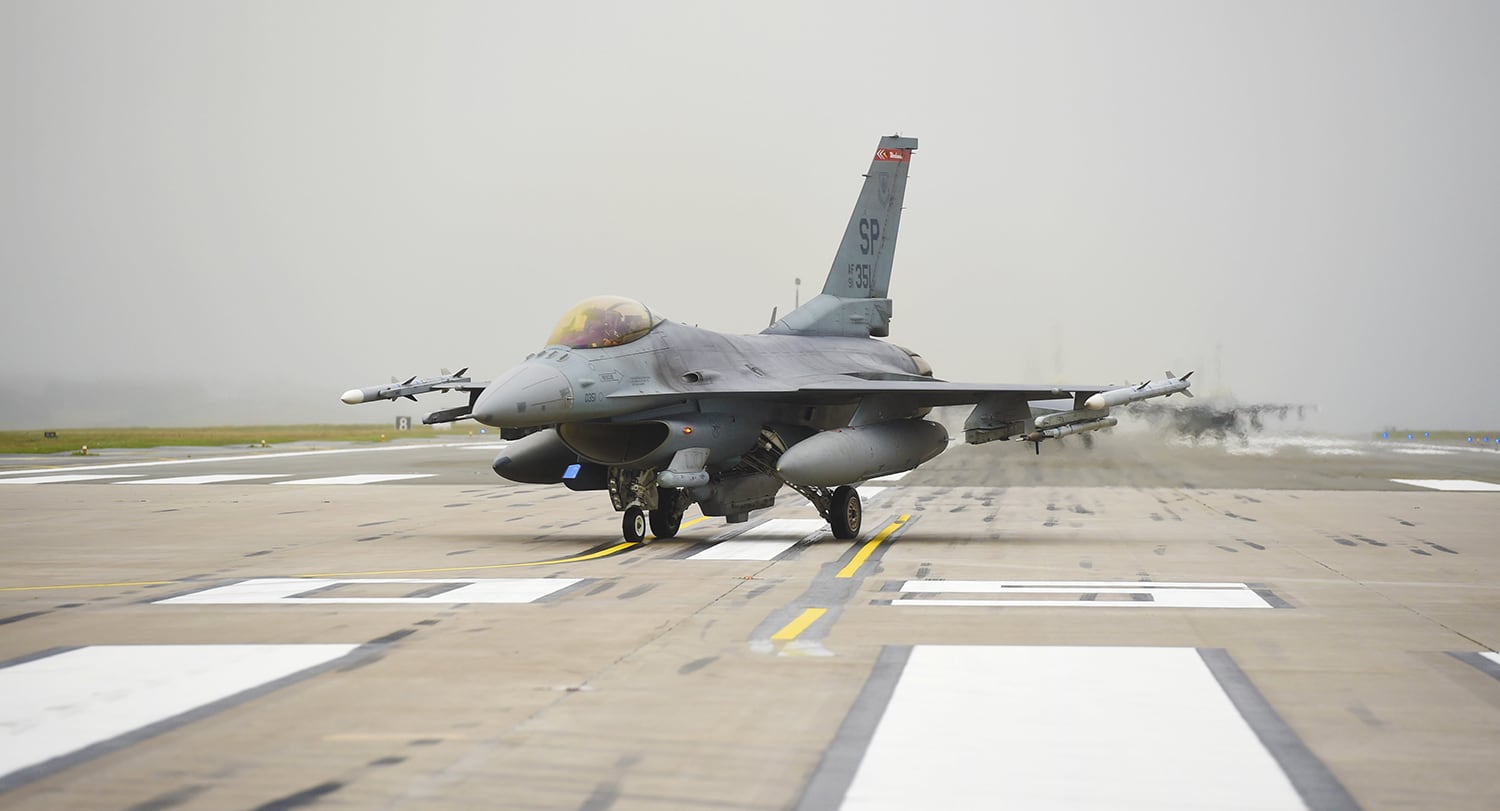A partial power loss, complicated by poor weather conditions, led to the crash of an F-16C Fighting Falcon on a training flight in Germany last year, investigators have concluded.
In a report released Tuesday, the accident investigation board said that the pilot of the F-16, who safely ejected and sustained only minor injuries, was not responsible for the crash on Oct. 8, 2019. The F-16, from the 480th Fighter Squadron of the 52nd Fighter Wing at Spangdahlem Air Base, was one of three fighters in the flight to practice suppression of enemy air defenses; a fourth fighter had another malfunction and was unable to take off.
The F-16 experienced a power disruption that caused a partial electrical power loss, also known as a brownout, about 13 seconds after takeoff on Oct. 8, 2019, the investigation found. This caused a “cascading failure” of several essential navigation and safety systems in the F-16 — the heads-up display went blank, the multifunction display sets turned off, the electronic horizontal situation indicator went blank, and the primary attitude director indicator became frozen, among others.
Complicating matters was the fact that the weather was overcast that day, with a ceiling at 500 feet above ground level, light rain, and poor visibility. At the time of the power disruption, the pilot had to rely on his flight instruments to maintain control of the aircraft during a critical phase of takeoff.
RELATED

But with those instruments providing either unreliable information or no data, the pilot became “spatially disoriented” and was unable to maintain control of the aircraft in that weather and at low altitude, the report said.
The pilot ejected about a minute and a half after takeoff and landed safely, reporting only minor aches from the ejection process. The F-16 flew for another 42 seconds before crashing into a dense, uninhabited forest near the town of Rodt, about eight nautical miles south of Spangdahlem. Nobody was injured or killed by the crash.
But the F-16 was completely destroyed — “shredded into mostly small pieces” that were scattered across a 1,000 feet-long debris field, the report said. Because the airplane was so thoroughly demolished, the report said, investigators weren’t able to gather enough evidence to figure out what caused the power loss.
“The Air Force is constantly evaluating its procedures with regard to safety, and the 480th Fighter Squadron has incorporated these findings into their training and procedures in order to enhance flight safety,” U.S. Air Forces in Europe and Air Forces Africa said in a release.
Stephen Losey is the air warfare reporter for Defense News. He previously covered leadership and personnel issues at Air Force Times, and the Pentagon, special operations and air warfare at Military.com. He has traveled to the Middle East to cover U.S. Air Force operations.




